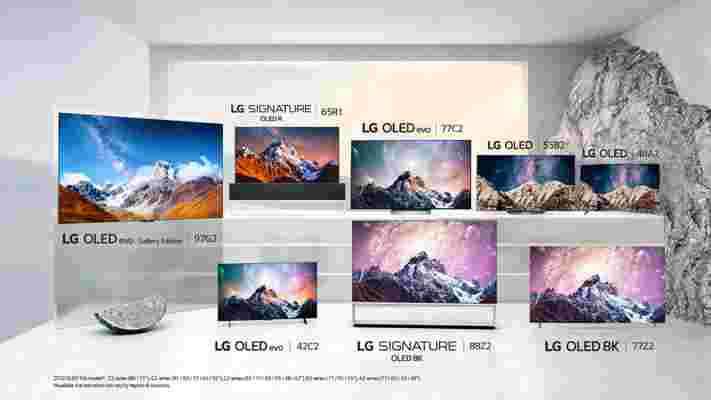Google has launched a multi-year scheme geared towards improving the level of privacy afforded to users of its Android operating system.
During a briefing call hosted by Anthony Chavez, who heads up the Android Security and Privacy division, TechRadar Pro was told about the company’s plans to extend its Privacy Sandbox project to Android devices.
The broad objective is to phase out advertising ID, a tracking system analogous to third-party cookies, and move towards alternatives that limit the sharing of user data with third-parties and do not rely on cross-app tracking to support advertising efforts.
Google will test out its initial proposals over the coming months, with a full public beta expected to arrive before the end of 2022. The company will continue to support the traditional system for at least another two years while it works out the kinks.
Privacy Sandbox on Android
Google first launched the Privacy Sandbox initiative in 2019, in recognition of the fact that the system underpinning its lucrative advertising business (powered by third-party cookies that track people across the web) creates opportunities for invasions of privacy.
A number of browser makers have moved to block third-party cookies outright, but Google contends that this is an irresponsible approach to remedying the problem, because it jeopardizes the business models that make possible the free services and content available online.
Instead, under the Privacy Sandbox scheme, Google is attempting to develop new technologies that improve the level of user privacy without compromising the ability for advertisers to create targeted campaigns and publishers to monetize their work.
“On the web, third-party cookies have been a valuable tool for publishers, developers and advertisers. On Android, the advertising ID plays a similar role. These systems were built a long time ago and have been successful at supporting the mobile and web ecosystems,” explained Chavez.

“But like with many other technologies that age over time, it’s critical that we evolve and develop new approaches that address the challenges of the current ones.”
However, Chavez was careful to note that creating a privacy-first system that does not kneecap advertising efforts is “incredibly complex” and may take a number of years. He also claimed that a cold turkey approach to technologies such as cookies and advertising ID incentivizes even more opaque tracking methods, such as device and browser fingerprinting.
With its initial proposal for Privacy Sandbox for Android, therefore, Google is aiming to establish a happy medium.
Under the scheme, Android will benefit from existing Privacy Sandbox APIs such as FLEDGE and Topics , which aim to localize ad auctions and collect users into broad interest groups, respectively. The idea is to minimize the amount of personal data swirling around on ad servers and limit the granularity of user profiles.
Unique to Android, meanwhile, is a technology Google is calling the SDK Runtime, which is billed as a safer way for apps to integrate with third-party advertising SDKs that supposedly reduces the potential for covert data collection.
Work in progress
As ever, Google’s arguments are well-formulated and highly compelling. However, if previous Privacy Sandbox proposals offer any indication, privacy activists will likely take issue with at least a few elements of the Android plans once they’ve had a chance to digest.
For example, Google was criticized recently by the company behind privacy-centric web browser Brave over its Topics API. The thrust of the argument was that Google is ill-qualified to determine what data should be classified as sensitive.
“Google says it will take care to share only ‘non-sensitive’ interests with sites. But there is no such thing as categorically non-sensitive data; there is no data that’s always safe and respectful to share,” wrote Peter Snyder, Senior Director of Privacy at Brave.
“Things that are safe to share about one person in one context will be closely guarded secrets to another. Meaningful privacy is inherently specific to both context and person. People should decide what they consider sensitive. Not Google.”
Synder went on to claim that Topics can only be considered an improvement in comparison to the low, low standards set by Google itself. He argues that Topics represents a grievous violation of privacy by any other definition, because it is designed to “share information about you with advertisers and organizations without active permission.”
Unsurprisingly, Google disputes this characterization. But the company has also acknowledged that the complexity of the issue means early Privacy Sandbox proposals are likely to be imperfect, and so will welcome feedback from regulators and industry stakeholders.
“This is the beginning of our journey on Android. We want to share with you what we’re thinking, while being transparent that we may not have the answers to all of your questions,” said Chavez.
“But fundamentally, we believe there is a path that supports both user privacy and a health global ecosystem. To deliver on this objective, we need to build new technologies that provide user privacy by default, while supporting the key advertising capabilities that make it possible for developers and businesses to succeed on mobile.”
LG C2 OLED vs LG G2 OLED: which 2022 LG TV should you choose?
This year's upcoming LG C2 OLED and LG G2 OLED are set to be two of the best OLED TVs released in 2022. Building on the success and popularity of last year's impressive C1 OLED and G1 OLED models, what we've seen so far strongly suggests this year's televisions are going to be better than ever.
Picking between them will be quite tough though. Despite carrying different names, the LG C2 and G2 are fairly similar - both offer a 4K resolution using OLED panels, and based on their predecessors they'll likely both support the same kinds of HDR tech such as Dolby Vision . They'll even come inbuilt with the latest version of LG's webOS smart TV platform .
However, there are some key differences that are worth taking note of that you'll want to consider when registering your interest in a preorder for these new 4K TVs .
So to help you decide which is best for you we've rounded up everything we know so far about LG's soon-to-launch TVs so you can decide which option is the best for you in terms of price and performance.
The prices for the LG C2 and LG G2 OLED TVs have yet to be officially confirmed, however, we expect the new models will cost slightly more than their predecessors. Additionally, the LG G2 OLED will likely cost more than the LG C2 OLED.
That's based on previous iterations of LG's TV - such as the C1, G1, CX, and GX - as well as leaked pricing details from LG Germany .
According to the leaks we expect that the LG C2 will cost:
And the LG G2 will set you back:
As with all leaks we have to take these details with a pinch of salt, but the details fit with what we expected to see from the LG G2 and C2 in terms of price comparisons.
However, those of you in the US and Australia should take note that the prices above may not match what you will see even if the European prices prove to be accurate.
That's because we have used a 1:1 currency conversion, but LG typically chooses its own prices for each territory and is not beholden to exchange rates.
That said, we do still expect to see equivalent C2 models cost less than their G2 counterparts regardless of what their official prices are in each region.

OLED Evo was the biggest differentiator between the LG C1 and G1 OLED TVs, however, in 2022 both the C2 and G2 will benefit from this screen tech. Take note though, the smaller C2 models (the 42-inch and 48-inch versions) will be stuck with regular OLED screens.
An OLED Evo display is, for the most part, the same as a regular OLED except that it has greatly improved brightness allowing it to produce more vivid colors - one of the weak spots for OLED TVs.
We’re interested to see how Samsung’s new QD-OLED screens compare - as these new displays promise to combine the excellent black contrast of OLEDs with the brightness of QLED displays - but we have to wait a little longer for Samsung to release these.
The designs of the LG C2 and LG G2 aren’t noticeably different from what’s come before, both featuring a flat-screen surrounded by slim bezels on every side.
When it comes to design, the main factor to consider then is how you want to place this screen in your home? The LG C2 is intended as a more traditional home cinema display that comes with its own stand.
While the C2 could also be hung on a wall, the ultra-slim G2 is better suited for this - as the screen continues to lean heavily into its ‘Gallery’ aesthetic (which is what the G in G2 stands for).
As for specs, it sounds like these TVs will be more similar than ever. We mentioned it above but will reiterate that this year models in both the C2 and G2 range will come with OLED Evo panels. If you’re after a 55-inch screen size or bigger, you’ll now get a similar picture quality on each display.
This picture will be an improvement on what has come before thanks to the new Alpha a9 Gen 5 processor. This chip will enhance the TV’s upscaling abilities over what’s come before, and it will supposedly make onscreen images appear three-dimensional by making the foreground and background elements more distinct from each other.
Additionally, while LG hasn’t stated this officially, specs detailed by FlatpanelsHD show that the LG G2 and C2 OLED TVs will support HDR10, HLG, and Dolby Vision, though it looks like HDR10+ still won't be supported by either - which is a shame.
Audiophiles will be able to appreciate the expanded abilities of LG’s AI Sound Pro feature no matter whether they pick the C2 or the G2 OLED TV. The tool is designed to provide more lifelike audio and enables the TV’s built-in speakers to produce virtual 7.1.2 surround sound.
Meanwhile, gamers will get plenty out of either screen. Using LG's Game Optimizer you can quickly adjust the White Stabilizer, Black Stabilizer, and VRR to suit your needs - and it includes support for Nvidia G-Sync and AMD FreeSync .
Thanks to the TV's HDMI 2.1 support you'll be able to make the most of your PS5 and Xbox Series X 's power by playing games at 120Hz in 4K. With a 1ms response time boot, PC gamers may also want to consider using this TV instead of a traditional monitor.

The LG C1 and G1 started to create a more noticeable divide between LG's flagship models in 2021, however, in 2022 the C2 and G2 seem to have way more similarities than differences.
With its 42-inch and 48-inch OLED options, the LG C2 will likely appeal to more budget-conscious consumers if their happy sacrificing a little on the size and picture quality.
However, for those looking at televisions that are 55-inch or larger, the C2 and G2 seem to offer equally impressive specs. You'll get excellent OLED Evo-powered pictures, realistic surround sound, and impressive support for high-end gaming rigs.
For now, at least, it seems to be a tie that can only be broken by your preference for using a TV equipped with a regular stand or hanging your screen on the wall.
As LG reveals new details about its 2022 OLED TV lineup - and when we get a chance to try its screens out for ourselves - we might find out about new reasons to opt for the LG C2 over the G2 (or vice-versa). If that's the case we'll be sure to update this comparison piece with everything we learn.
Pokémon Scarlet and Violet: everything we know so far
Pokémon Scarlet and Violet are the next mainline Pokémon games and they’re expected to arrive on Nintendo Switch in late 2022.
With the spin-off Pokémon Legends: Arceus having only released in January, 2022 is now book-ended by major Pokémon releases. As a result, it might feel like we're jumping into Gen 9 a little sooner than expected but that's not to say Pokémon Scarlet and Violet aren't going to try and push the series forwards. In fact, it looks like they'll build effectively on the open-area advancements of Pokémon Sword and Shield and Pokémon Legends: Arceus to be the series' first fully open-world titles.
According to the Pokémon Scarlet and Violet official website , with these releases the series "takes a new evolutionary step, allowing you to explore freely in a richly expressed open world. Various towns blend seamlessly into the wilderness with no borders. You’ll be able to see the Pokémon of this region in the skies, in the seas, in the forests, on the streets—all over! You’ll be able to experience the true joy of the Pokémon series—battling against wild Pokémon in order to catch them—now in an open-world game.”
Things look promising so far but there's still a lot we don’t know about Pokémon Scarlet and Violet yet. In the meantime, we've gathered all the latest news and rumors below for your perusal.
Pokémon Scarlet and Violet: cut to the chase
Pokémon Scarlet and Violet release date

While we don’t know the exact release date of Pokémon Scarlet and Violet just yet, we do at least have a vague release window. As part of its official announcement, The Pokémon Company confirmed that the games will be coming out in late 2022. That means we probably won't see the games' release until August at the earliest.
This is pretty surprising, especially considering players are still playing Pokémon Legends: Arceus which came out in January of this year. That means there will be two major Pokémon games out in 2022, though some may class Arceus as a spin-off.
It’s clear both games will operate a little differently, however, with Legends: Arceus a more experimental take on Pokémon , while Scarlet and Violet look like they will be more in the vein of classic Pokémon games in the series. Expect to be fighting gym leaders, moving from town to town, and trying to become the best trainer in the region.
Unsurprisingly, Pokémon Scarlet and Violet will be released exclusively for the Nintendo Switch family of consoles, including the Switch Lite and Nintendo Switch OLED .
Pokémon Scarlet and Violet trailers

Pokémon Scarlet and Pokémon Violet Announcement Trailer The announcement trailer for Pokémon Scarlet and Violet was revealed on Pokémon Day, February 27, 2022. In the trailer, we were given a glimpse of the new, unnamed region, as well as some of the Pokémon who inhabit it.
We can see Pokémon freely roaming the world, as well as some of the different biomes the region offers such as grasslands, wetlands, cityscapes, deserts, and beaches. It’s clear that players will experience a lot of variety when they're out catching Pokémon.
On top of seeing a glimpse of the region, players are given their first glimpse at the new Gen 9 starters: Fuecoco, and
Pokémon Scarlet and Violet starters

The debate around which Pokémon starter is best has already begun. We’ve been given our first look at the new companions, and as ever, the starting Pokémon types players can select are Grass, Fire, and Water.
The Grass-type starter is called Sprigatito, an attention-seeking Grass Cat Pokémon that has an ability called Overgrow. When active, all Grass-type moves will be boosted by 50% if an enemy Pokémon has a third of its health left.
The Fire-type starter is called Fuecoco, a laid-back Fire Croc Pokémon that knows the Blaze ability. Again, this means Fire-type moves are boosted by 50% if an enemy Pokémon has a third of its health left.
The Water-type starter is called Quaxly, an earnest and tidy Duckling Pokémon that knows the Torrent ability. As before, this means the power of Water-type moves will be boosted by 50% if an enemy Pokémon has a third of its health left.
There’s no word on evolutions for these starters, but we can be fairly sure each starter will have two evolutions. That’s how it’s been in Pokémon ever since the first game, so expect the same here.
Pokémon Scarlet and Violet news and rumors
More news coming soon? Nintendo could be preparing to release more details on Pokémon Scarlet and Violet, as the company has published a webpage for the game on MyNintendoStore . While the page is pretty bare right now, you can add your name to the Pokémon Scarlet and Violet mailing list to ensure you find out the latest details (including information on pre-orders) on the game as they're announced.
With the next Pokémon game due to release later this year, we expect more details will roll out in the becoming months so be sure to sign up so you don't miss them.
Pokémon Scarlet and Violet arrives later this year Pokémon Scarlet and Violet is the next mainline game to release in the series and will be making its way to Nintendo Switch later this year.
Announced during February’s Pokémon Presents , Scarlet and Violet will introduce the ninth Generation of Pokémon, three new starters, and a new region to explore across an open world map. It’s under development at Game Freak, the same studio that released Pokémon Legends: Arceus in late January earlier this year.
Nintendo is framing Pokémon Scarlet and Violet as a big advancement in the Pokémon series, describing it as “a new evolutionary step” that will allow you to “explore freely in a richly expressed open world.”
Towns will “blend seamlessly into the wilderness with no borders”, and you’ll get to “see the Pokémon of this region in the skies, in the seas, in the forests, on the streets.”